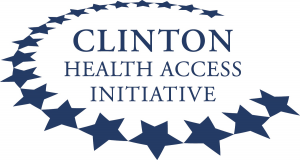CHAI’s ARV market report shows more people than ever on ART in 2015 – and on better ART: but still some way to go
29 November 2016. Related: Treatment access.
 Polly Clayden, HIV i-Base
Polly Clayden, HIV i-Base
Two million more people started ART in 2015, marking one of the largest annual increases. But we still have a long way to go as less than half of the 37 million people living with HIV worldwide are now receiving treatment, according to the 7th CHAI ARV Market Report.
The Clinton Health Access Initiative (CHAI) ensures rapid access to the best antiretroviral and diagnostic products at affordable prices for low- and middle-income countries (LMIC). And the organisation publishes an annual antiretroviral (ARV) market report for the public domain based on its work in over 30 countries. [1]
The latest issue reports that of the nearly 37 million people needing ART, 46% received it in 2015.This proportion included a growth of two million people receiving ART that year – one of the biggest annual increases ever.
In keeping with this increase, the overall LMIC market expanded to almost $US 2 billion in 2015. And cost of ART for adults per person year (PPPY) decreased by 6-10% in 2015 from 2014 for adults and second-line for children in generic accessible countries. It now costs about $US110 to treat an adult with a preferred ART regimen.
Over 70% of both adults and children received WHO preferred regimens (or optimal paediatric formulations as defined by the Interagency Task Team [IATT]). So, cost of treatment generally fell with higher volumes, while quality of treatment rose in generic accessible countries.
Three Indian generic manufacturers – Mylan, Cipla and Hetero – continued to supply approximately 70% of the generic accessible LMIC market.
More countries have adopted Treat All policies – including Botswana, Cambodia, Lesotho, Kenya and South Africa. And guidelines for oral PrEP are being considered for roll-out in many countries.
CHAI note that access to new generic drugs and formulations will provide benefits to people with HIV as well as cost savings.
The first generic dolutegravir (DTG) has now been tentatively approved by the FDA. Botswana became one of the first countries to include DTG in its national guidelines and several others will follow. Low dose efavirenz (EFV400) should be available in 2017 and tenofovir alafenamide (TAF) is also likely to come on to the ARV market over the next two or three years.
For children, the lopinavir/ritonavir (LPV/r) pellets have been launched in a number of countries and several are planning to use the abacavir/lamivudine (ABC/3TC) reduced strength, dispersible tablets.
CHAI are working with trial investigators, regulatory agencies and manufacturers to accelerate the development and availability of these new drugs and formulations.
Comment
In the report, the authors from the usually measured organisation state that CHAI is “excited and optimistic about future opportunities in the ARV market”. This is with good reason as recent years have shown both improved regimens and more people receiving ART. Newer drugs and formulations should enhance the market further.
CHAI’s annual ARV reference price list for 2016 was also recently published and includes DTG for the first time at US$4.00 for a bottle of 30 tablets. [2] CHAI notes that The Global Fund’s pricing served as an indicative reference before any generic manufacturer received approval and more refinement to this price is likely since Aurobindo’s tentative US FDA approval.
References:
- ARV Market Report: The State of the Antiretroviral Drug Market in Low- and Middle-Income Countries, 2015-2020. Issue 7, October 2016.
http://www.clintonhealthaccess.org/content/uploads/2016/10/CHAI-ARV-Market-Report-2016-.pdf (PDF) - 2016 CHAI ARV Reference Price List. 14 November 2016.
http://www.clintonhealthaccess.org/content/uploads/2016/11/2016-CHAI-ARV-Reference-Price-List_FINAL.pdf (PDF)

